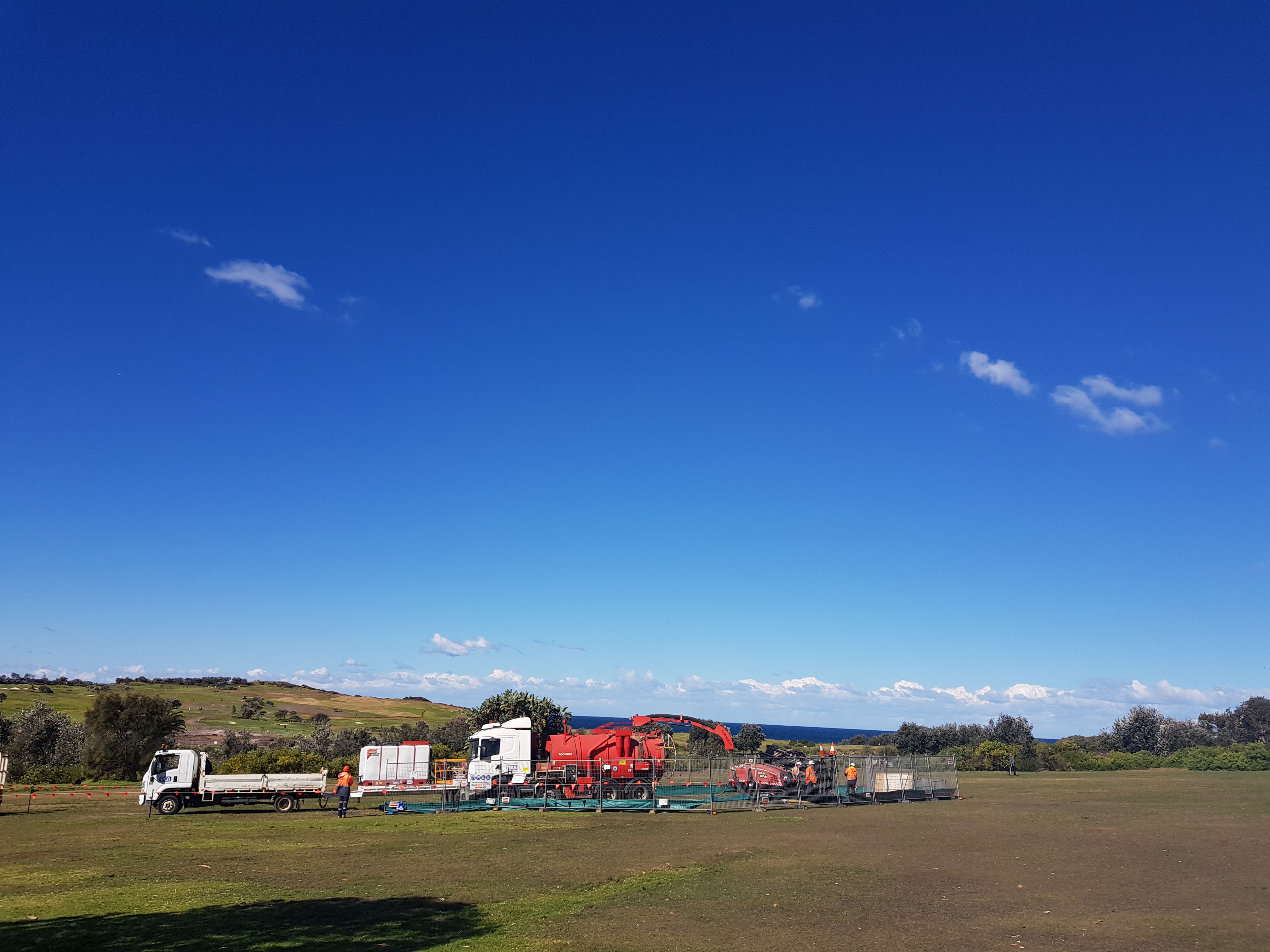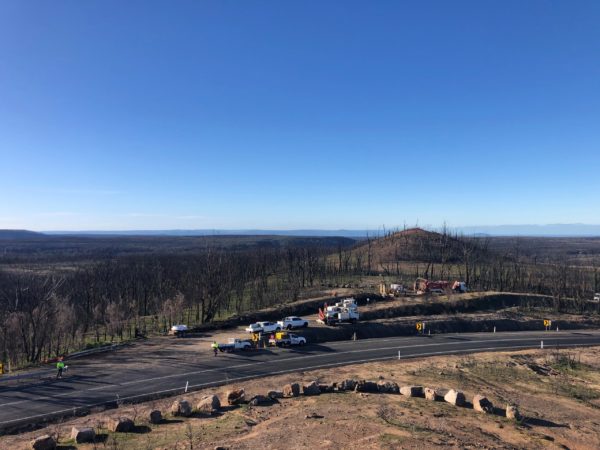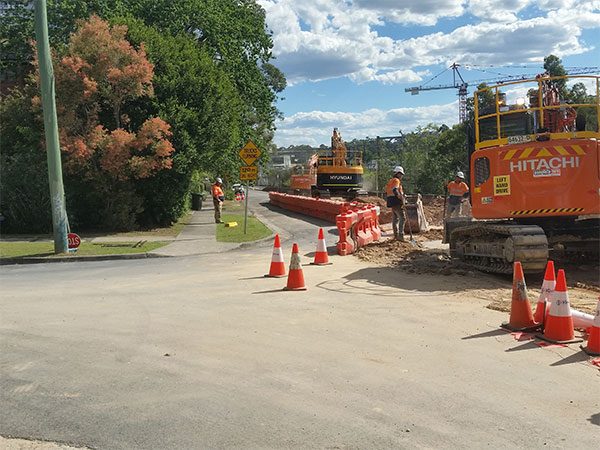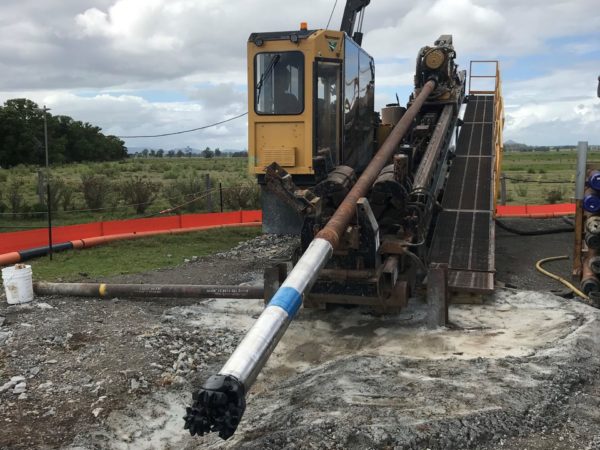Scope of Works
As a part of these works, the cable was required to be brought from its landing point in Narrabeen, Sydney, to a data centre in Brookvale, Sydney. UEA was engaged as an industry expert to complete the land-based aspect of the project using trenchless technology construction methods.
In consultation with UEA, a route was devised for conduit and pit installation between the ocean outfall beach manhole in Narrabeen to a data centre in Brookvale, utilising both main roads and side streets, totalling a distance of 9,568 metres. UEA was tasked with installing all conduits and pits along the route across a range of ground conditions using HDD, and with all services requiring locating. A total of 84 bores were conducted to install 16,067 metres of HDPE conduit – 6,500 metres of twin 63mm, 103 metres of single 63mm and 2,964 metres of single 110mm – along with 52 pits and 31 link-ups. Other activities associated with the works package included compound establishment and restoration, bore entry/receival pit excavation and backfill, pipe welding, conduit concrete encasements, traffic control, trenching, WAE drawings and final non-pavement restoration.
PITTWATER ROAD
Slightly more than half of the project distance was located along Pittwater Road. Opened in the 1930s, Pittwater Road is the main arterial road between Manly and Mona Vale servicing over 39,000 vehicles per day. As the major thoroughfare in the area, working hours on Pittwater Road were restricted to 7am-2:30pm with an approved Road Opening Permit and traffic control in place. A clearway was also present from 3pm- 7pm. requiring the majority of equipment and machinery to be demobilised at the end of each shift and remobilised the following day, again reducing the total productive work hours each shift.
Utility development must occur simultaneously to infrastructure development in order to be able to cope with the added demand, resulting from the infrastructure development. Due to the age and arterial nature of Pittwater Road, many utility upgrades and additions have been installed previously, filling the allocated alignments for any new services. UEA assisted in locating existing services and finding potential spaces for this new utility to be installed in, with the requirement that a supplied large haul pit was required every 250 metres and large joint pit every 2.5 kilometres. Furthermore, it was known that several international optic fibres would need to be crossed, again reducing the available room in the allocated alignment as these optic fibre cables required minimum clearance distances from other services. Using a combination of non- destructive electronic locating tools and potholing, UEA was able to locate the largest available spaces within the existing utilities, however not all these gaps were large enough for the required pits. On a case-by-case basis, UEA worked with the client to solve this issue by proposing alternate solutions including pit specification changes and relocating pits onto side streets.
Ground conditions along Pittwater Road varied greatly, as the road alignment not only follows the undulations of the areas hills and flats, but also varies its distance from the ocean. This resulted in UEA encountering an array of ground conditions from rock formations to sandstone to unstable sands with the latter posing the greatest challenge due to its cohesionless properties and the high vibration environment created by Pittwater Road traffic. UEA’s mud engineers had to formulate a brew of drill mud that could stabilise the bore against collapse, whilst still effectively transporting cuttings out of the bore.
CHALLENGES
Locating adequate room for pits to be installed
Crossing and boring alongside existing services including international optic fibres
A portion of footpath along Pittwater Road had been recently replaced with reinforced pavement
causing interference between the drill head and the walk-over tracking system
Contaminated ground was encountered at several locations across the project, requiring the drill mud and excavated material to be kept separate from all other material to prevent cross contamination and all plant and equipment used to collect or transport said material decontaminated after use
Limited working hours and a tight project deadline required up to three drill rigs and three civil crews onsite at once
Managing ground water due to the proximity of the project to the ocean
Working in and around the heavy traffic of Pittwater Road and the narrow back streets of the Northern Beaches
Pipe could not be strung out prior to pipe-pull due to driveway access requirements and lack of room
Managing excavations in unstable ground, especially during rain periods
COMPLETION
Despite the challenges presented, the project was delivered on time and to budget. The client was suitably impressed with UEA’s performance, stating that “the JGA cable project is a success story to us all” and that UEA’s “efforts stood out as you went above and beyond to meet expectations and deliver as promised.”





